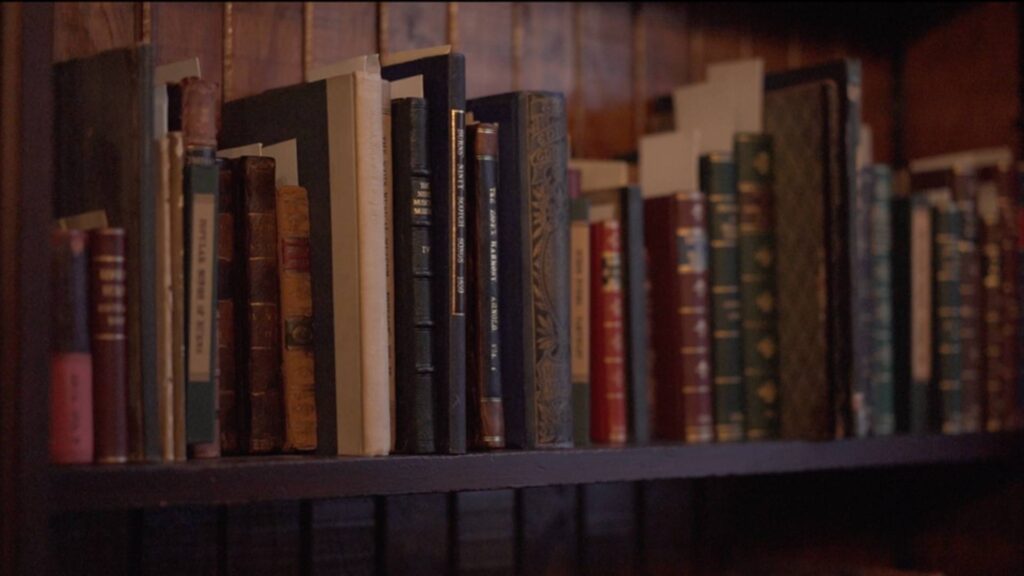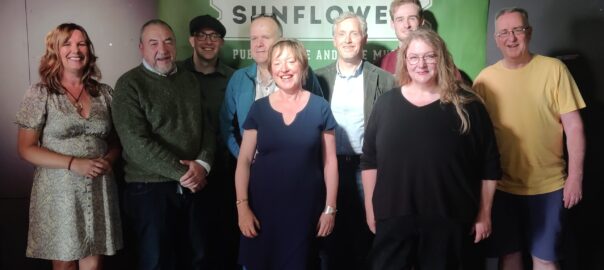A writer writes. But insights about cultural context are important and, for the writer, intriguing. We plash about in the stream of words. It’s good to lift the head and see what kind of a stream – or burn – it is.
Robert Burns and Modern Ulster-Scots Poetry Steve Dornan, in this enlightening essay for the Burns Chronicle, {Burns Chronicle 132.2 (2023): 204–215, published by Edinburgh University}, explores “how Burns’s increased visibility in Ulster is replicated in the work of modern poets who use Ulster-Scots in their work.”
Burns has been increasingly foregrounded in recent years, as Dornan notes, “in official presentations of Ulster-Scots by the Ulster-Scots Agency and other public bodies. High-profile Burns Night concerts are now a staple and TV programmes have been commissioned to mark the occasion. Burns’s image also features prominently on the Ulster-Scots Agency websites and promotional materials. Has this increased visibility led to writers re-engaging with Burns, or can modern Ulster-Scots poetry be viewed as definitively ‘post-Burns’?”
This making Burns visible, as it were, (actually on the streets in the presence of display banners in Belfast city centre, for instance) is perhaps a cyclical phenomenon. Prof. Wesley Hutchinson, in his article ‘Constructing An Ulster-Scots Burns’ traces the ways in which Burns’s work and ‘heritage’, was ‘curated’, from the mid-nineteenth century to just after the First World War, to serve the interests of one or other social or political group.

Dornan himself is central in the current florescence of Ulster-Scots writing, being the author of the genre-busting poem, Tha Jaa Banes. As he says himself, “The title poem, ‘Tha Jaa Banes’, is a semi-ironic supernatural Ulster-Scots romp which alludes at several points to the unquestionable masterpiece of the genre, Burns’s ‘Tam o’ Shanter’. In terms of form, voice, language and theme, echoes of and dialogues with Burns might be apparent to readers familiar with the work of the Ayrshire Bard.”
Dornan traces how verse forms typical of Burns’s work appear, or do not appear, in modern Ulster-Scots writing. And he examines Seamus Heaney’s acknowledgement of the influence of Burns and Heaney’s own use of the vernacular. Dornan’s own work engages directly with Burns’s, perhaps, he suggests, because he lives in Scotland and studied at a Scottish university.
He assesses the influence of Burns on the work of of several contemporary Ulster-Scots writers and how it compares to the generation of writers who came to prominence in the 1990s such as James Fenton and Philip Robinson. Their consciousness of Burns, he believes, ” tends to stop short of the direct engagement with his work that was evident in previous generations of Ulster-Scots writers.”
He invites the writers, Alan Millar, Robert Campbell and Anne McMaster to consider Burns’s influence on their work. Their responses are, it seems to me, invaluable insights into a working process that is happening right here and now in Northern Ireland, a place which is not, to state the obvious, Scotland. It shouldn’t be surprising that Burns registers in ways that are unlike, and like,his impact in Scotland.
Robert Campbell refers, Dornan writes, to “childhood memories of looking at the illustrations in his grand-father’s nineteenth century ‘Edina’ edition of Burns’s poems, a volume which he subsequently inherited. This is a nice symbol for the sort of organic folk culture that traditionally exists around Robert Burns in Ulster. Campbell talks about Burns’s role in convincing him that Ulster-Scots is a valid medium for writing. He says: ‘It was the validation of language that was most important. He was an icon of literature but we were stupid for using the same words.’
Alan Millar, according to Dornan’s interview with him, recognises “the indirect influence of Burns. Millar is an enthusiast of writers from the Ulster-Scots tradition, who are much less globally recognised than the Scots tradition’s iconic poster boy. He says, ‘I approached Burns through the likes of (Samuel) Thomson and (James) Orr, the Ulster-Scots tradition. So his influence on me has an indirect element.’ The influence of these Ulster-Scots writers, sometimes collectively known as ‘The Weaver Poets’, or ‘The Rhyming Weavers’, is evident in several of his poems that use traditional stanza forms such as standard Habbie. In 2020 his poem ‘Wee Weaver Birdie’, which won the Scots Language Association’s ‘Tassie’ prize for best poem in 2021, alludes to this tradition. This poem uses the image of the wee weaver birdie as a metaphor for the Ulster-Scots tradition and its decline.”
Anne McMaster “also speaks of an indirect connection to Burns. In a statement that it is difficult to imagine a Scottish writer producing, she says: ‘I came late to reading Burns, and understood him as a pre-Romantic poet who had a real affinity with nature and the human condition.’ Anne McMaster appreciates the emotional impact of Burns’s language. She says: ‘It’s totally different from English – there’s a visceral response in reading his work (and in doing my own creative work in Ulster-Scots) that I don’t / can’t feel when writing in English.’ (I agree.)

Steve Dornan interviewed me. Angela Graham, he writes, “feels influenced by some of Burns’s aesthetic choices and in particular his propensity for combining contrasting elements in his work: ‘I’d say I am influenced by those poems of his which appear simple in sentiment and rhyme but which carry a strong current of feeling; also his humorous poems. I don’t seem to come across much contemporary poetry which is deliberately light, amusing and double-layered, entertaining while conveying something solid.’
“This inclination,” Dornan says, “towards contradiction and paradox is something that has been mooted in critical writing on Scottish poetry from as far back as G. Gregory Smith’s famous characterisation of Scottish poetry as embodying a ‘zigzag of contradictions’. This suggests that Burns, for writers of Ulster-Scots, can represent wider aesthetic possibilities that go beyond the linguistic.”
Steve Dornan concludes: “A modern poet from Ulster, in contrast to a Scottish counterpart, is likely to have experienced a different level of exposure to Burns in educational settings and popular culture. This perhaps means that there is less necessity for writers of Ulster-Scots to engage with Burns, whether in emulation, or ostentatious bouts of bardoclasm. Writers from Ulster, therefore, have the freedom to engage with and re-discover Burns on their own terms.
“On the other hand, of course, good poetry cannot exist in a vacuum and is often in dialogue with tradition. Whether the traditional forms used by Burns are present or not, Burns can act as a useful avatar for writers who use Ulster-Scots in their work: the confident non-standard voice, the unabashed celebration of the marginal, the subtle, elusive artistry of his personae and the thrawn recalcitrance of his language and social commentary are all of value to any of us.”
As a writer in Ulster-Scots I’ve found Steve Dornan’s questions thought-provoking. My initial encounter with Burns’s work was in my childhood through songs, whose words we copied from the blackboard. So the words reached me as verse and as music. They were, therefore, ‘mine’ from my earliest years. Over the years I’ve enjoyed traditional Scots verse forms, often encountered through Burns and these have become mine also and form part of my writing repertoire. I find the technical challenges they set and their vernacular demand for authenticity and avoidance of pretension invigorating.
A very useful insight from Steve Dornan onto an aspect of the current Ulster-Scots writing scene.
And to meet some Ulster-Scots writers in person –

AYONT THE HAMELY TONGUE
The Linen Hall 17 Donegall Square North, Belfast, United KingdomThis year, The Linen Hall is proud to mark the Ulster-Scots Language Week with an evocative poetry reading event. Six distinguished poets—Robert Campbell, Angeline King, Ronnie McIlhatton, Anne McMaster, Alan Millar, and Morna Sullivan—are coming together to take us on a journey of words and emotions. Join us for a celebration of the Ulster-Scots heritage and talent.
